
Key Points
- S&P 500 Fights to Regain Short-Term Support
- Another False Move for Small Caps
- NASDAQ 100 Begins to Lag
- Commodities Break Out, the Dollar Stalls, and the 10-Year Hits Important Support
- Sentiment is Mixed
Mid-Week Market Update – United States
The S&P 500 responded to the bearish RSI divergence by breaking below near-term support and the 50-day moving average before staging a rebound to test these two levels from below. The rising 100-day moving average still speaks to a bullish intermediate-term trend, as does the fact that the price is holding above the 4,550 level. Retaking 4,725 is the key for the bulls, while below 4,550 the bears will take control of the match.
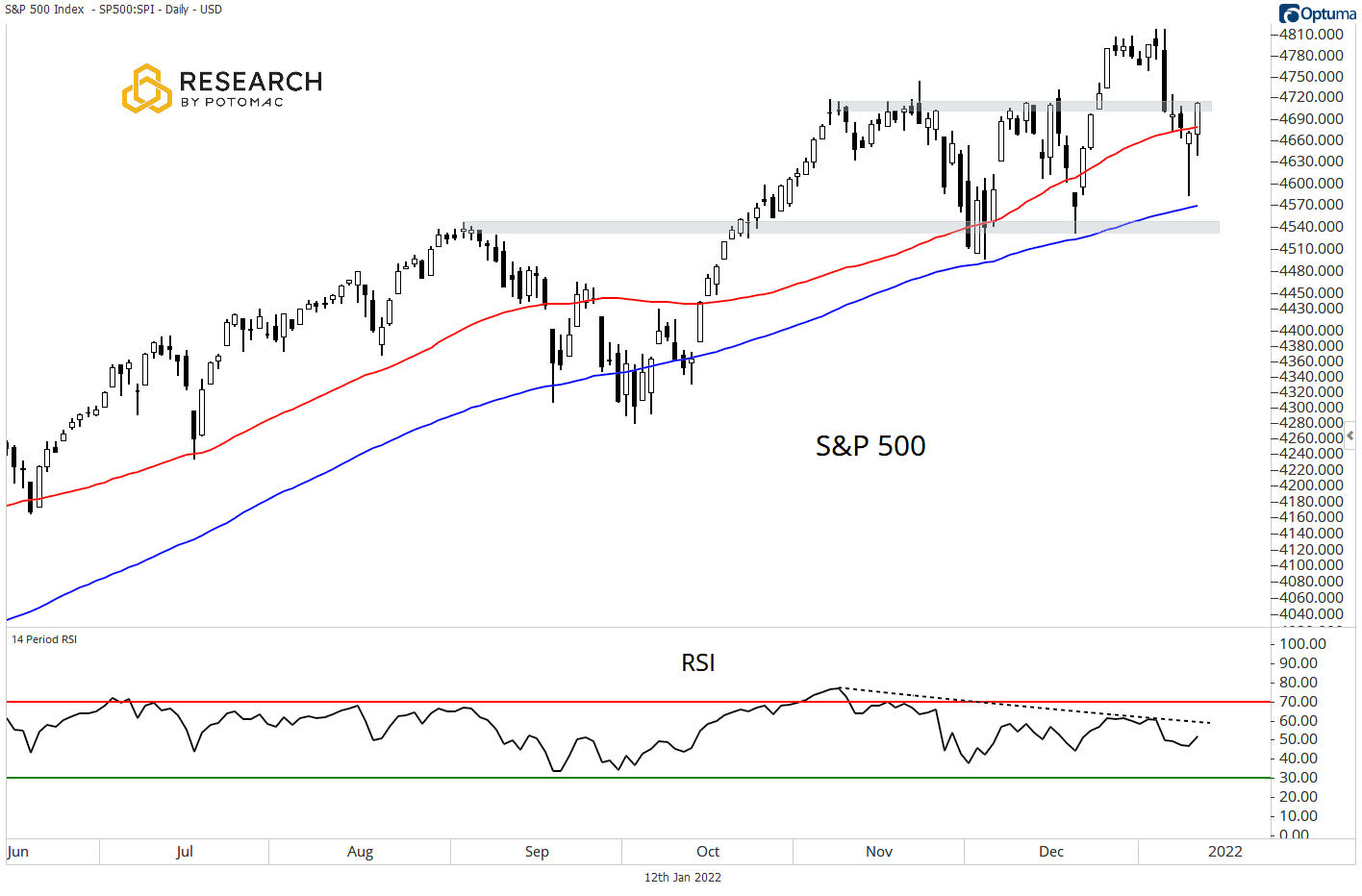
The S&P Small Cap 600 could not hold above the breakout level, marking a second time that the bears have stolen the bull just as the bulls were making progress. We are left with a sloppy consolidation, with the price trapped between the 50 and 100-day moving average. The 14-day RSI is making higher lows, giving a slight edge to the bulls, but it is hard to make a high conviction bullish call until they show an ability to hold the breakout.
The relative trend remains bearish. A break of the 50-day moving average would be a positive sign and would set the stage for an attack on the resistance level.
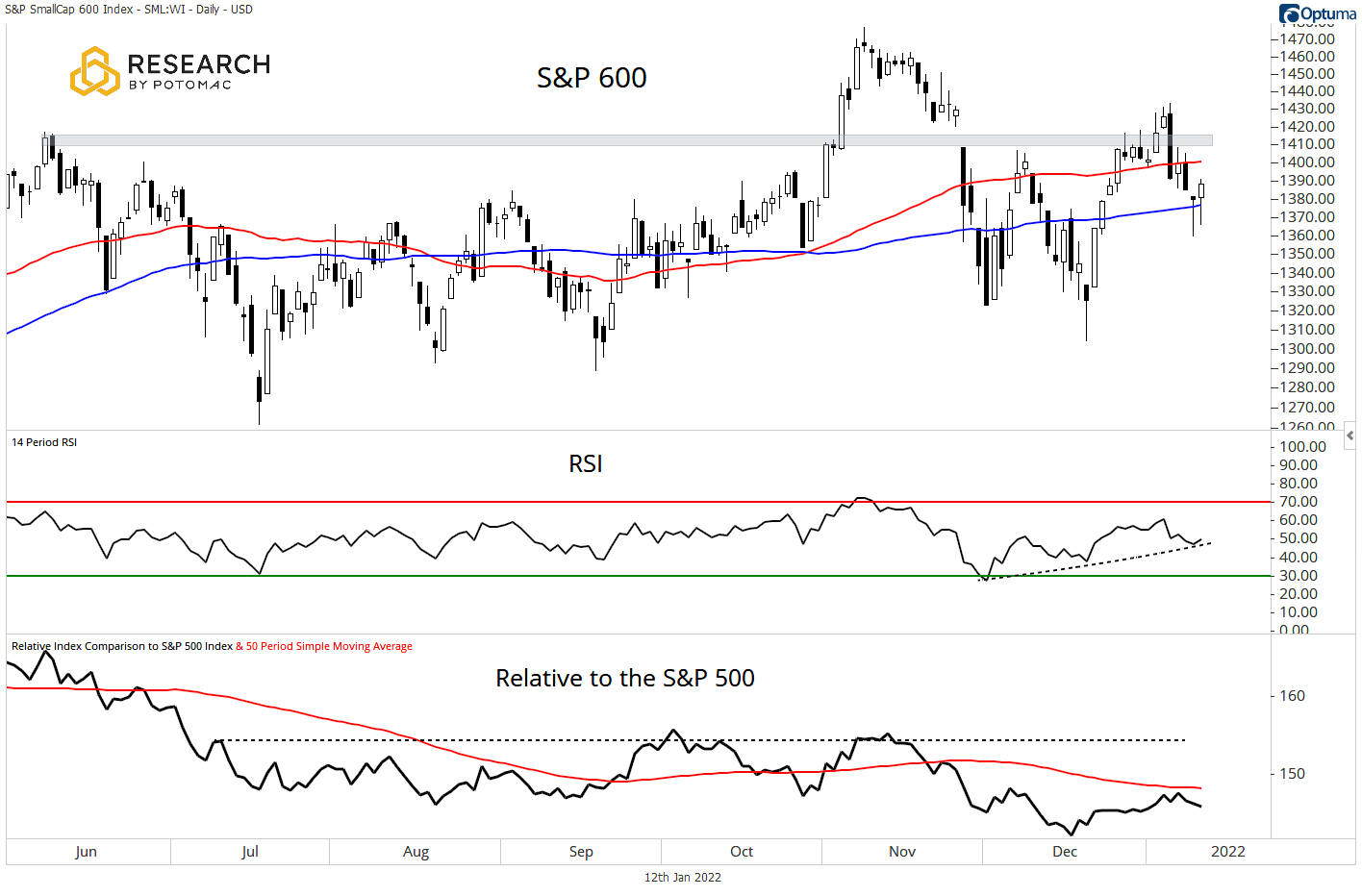
The NASDAQ 100 is doing all that it can to avoid breaking support and losing its bullish trend. The index is below the 50-day moving average, which is beginning to turn down but is holding the 100-day moving average. The 14-day RSI is holding the lower bound of a bullish regime, but the series of lower highs remains a concern.
The relative trend is a bigger issue for the bulls as support has been broken below the declining 50-day moving average. Until these two levels are overcome, odds favor a shift to underperformance.
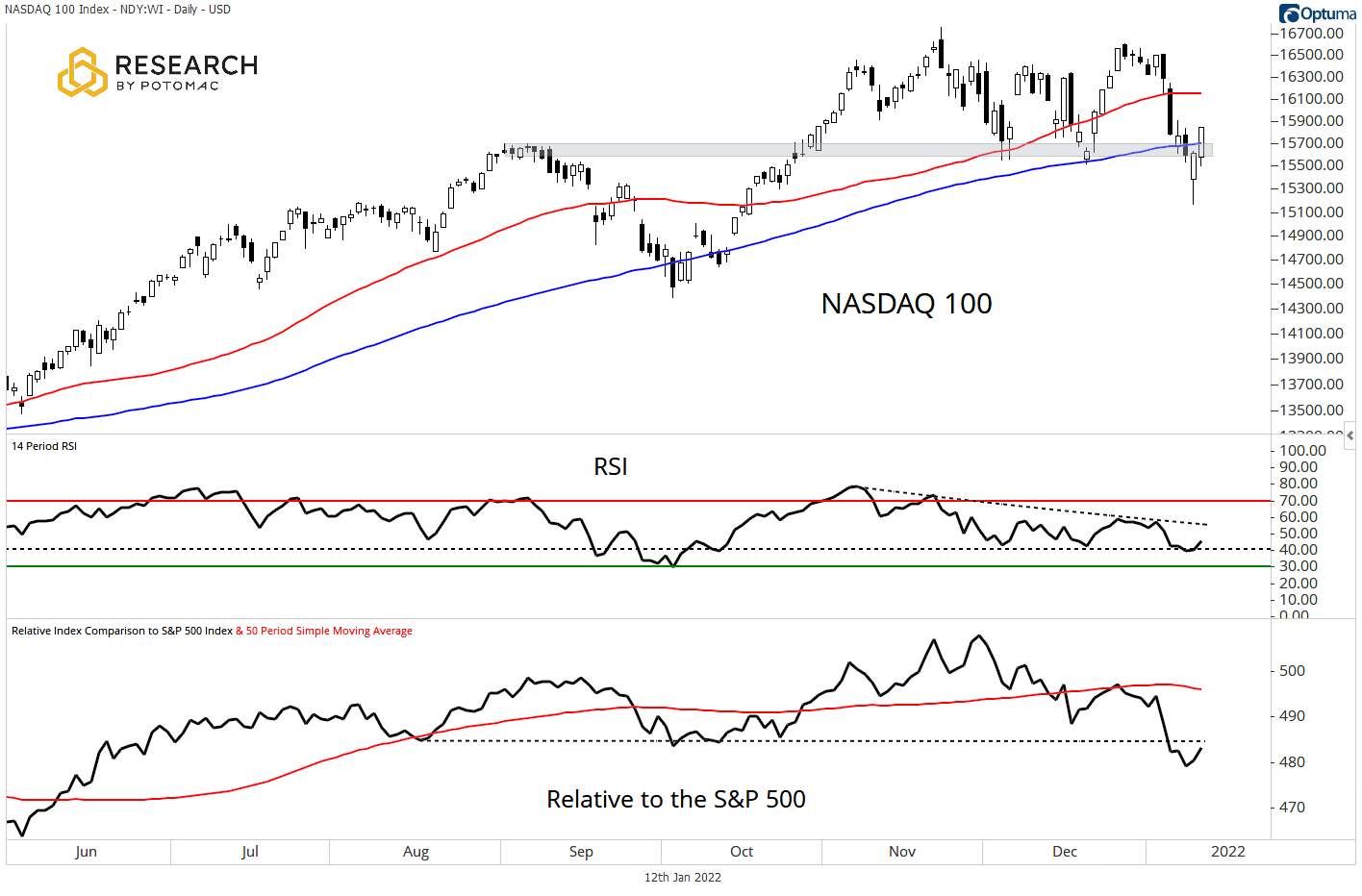
The 10-Year Note has seen its decline below the 50 and 100-day moving averages accelerate over the past week, pushing price down to the 2019 support level that we highlighted in these pages last week. At the same time, the 14-day RSI has moved into an oversold position. This sets the stage for a countertrend rally in the 10-Year Note that could take it back to the 50-day moving average.
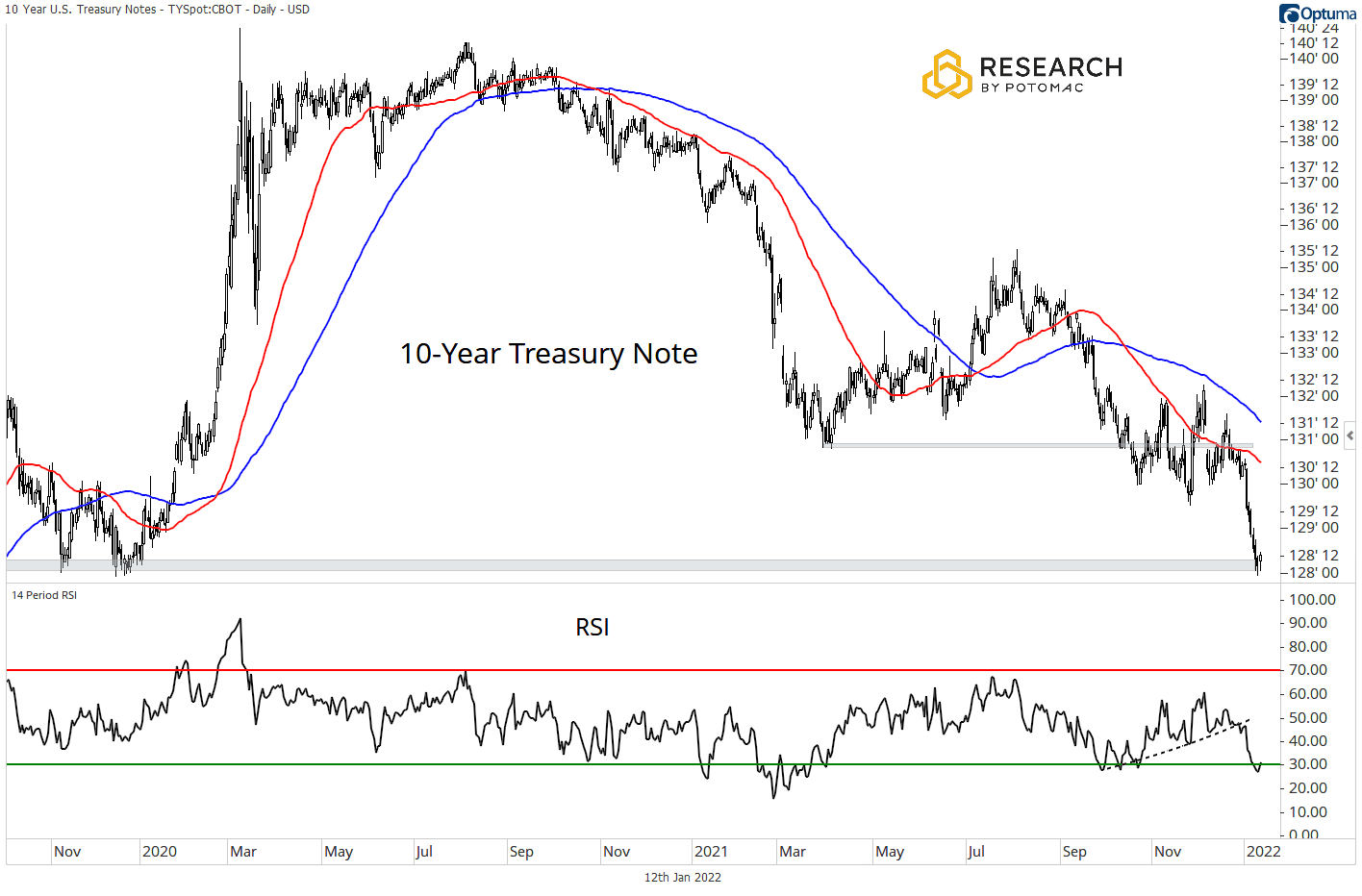
The Bloomberg Commodity Index has retaken the breakout level as the comeback that we cited last week continues to play out. The index is above the 50 and 100-day moving averages as well. Above 101, the bulls are in the top position, and the move is confirmed by a rising 14-day RSI.
After finding support at the August low, the relative trend has retaken the 50-day moving average and will now make a run at resistance to reestablish a leadership role.
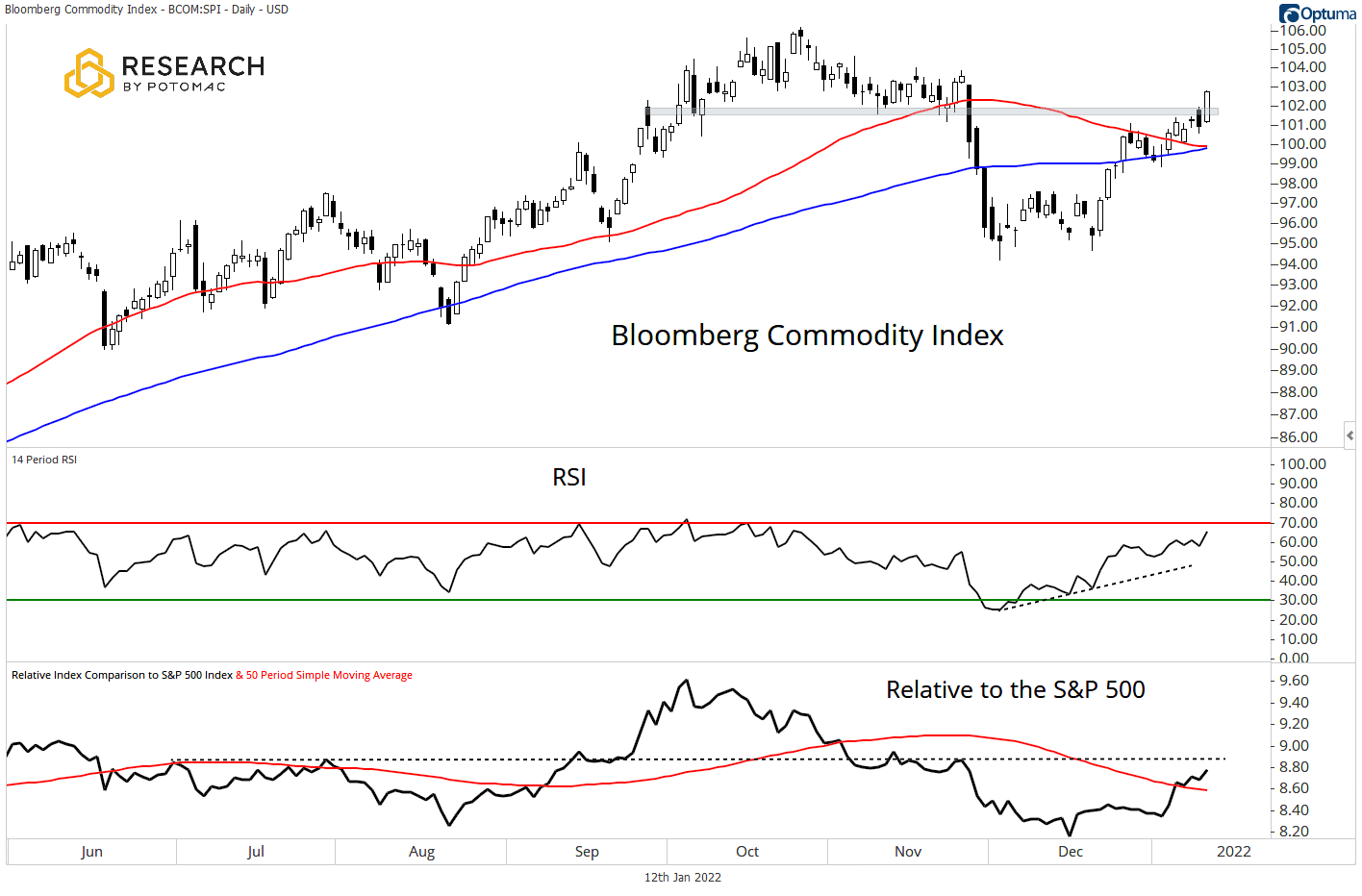
The U.S. Dollar Index continues to stall. Price has moved below the 50-day moving average to test short-term support. The 100-day moving average is in line with the key 94.50 level, which will be in play with further weakness. The 14-day RSI is moving toward the 40 level and has been in a downtrend since November. Dollar bulls have some work to do to keep control.
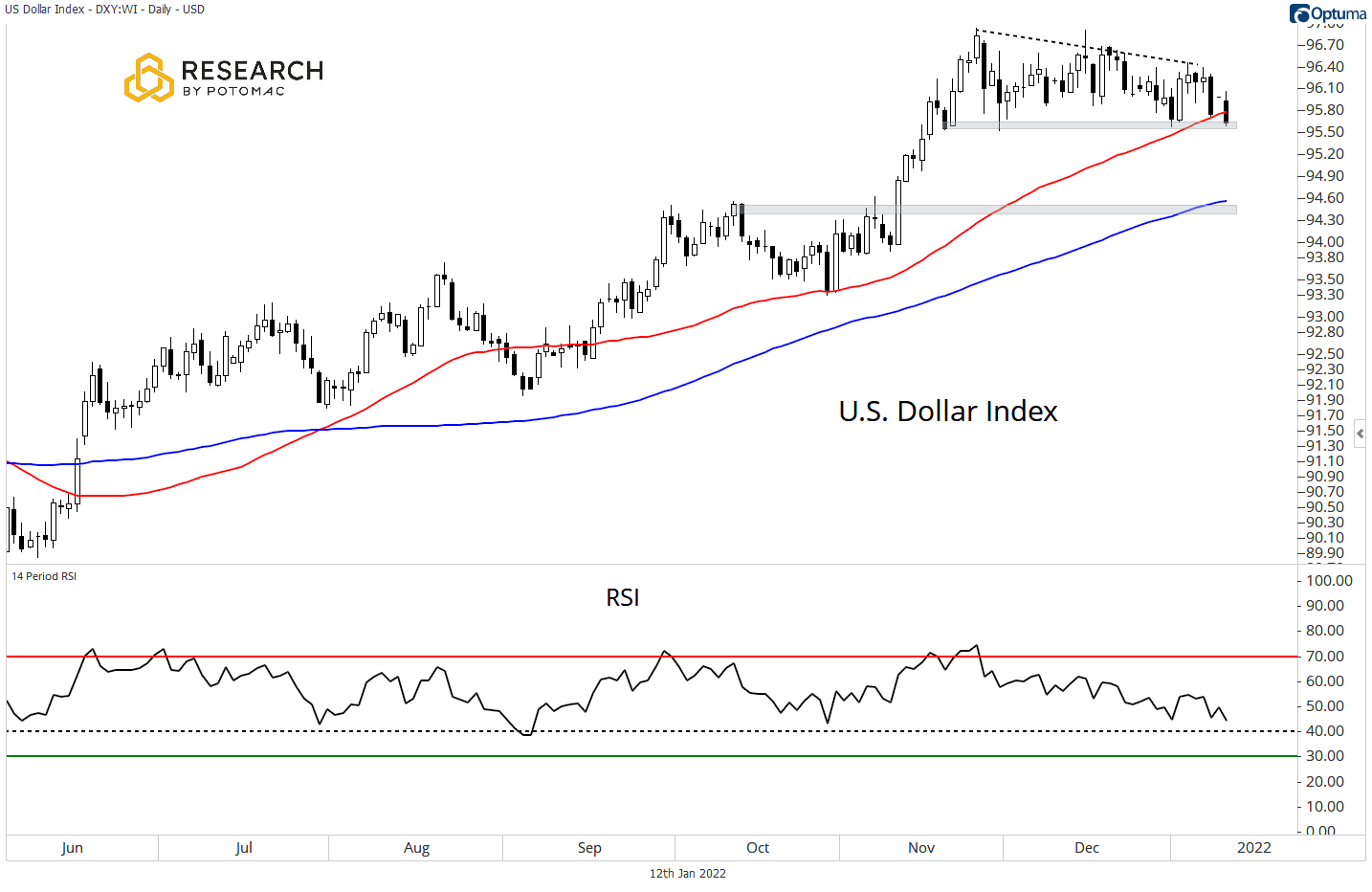
Sentiment Check
The CBOE Volatility Index (VIX) has moved higher over the past week, trading to 18.41 from 16.91. The current level is not one that gives us a strong view on fear or greed.

While the VIX is somewhat neutral, the CNN Fear & Greed Index remains in a “greed” position, though slightly less so this week. This week the metric moved from 67 to 59.
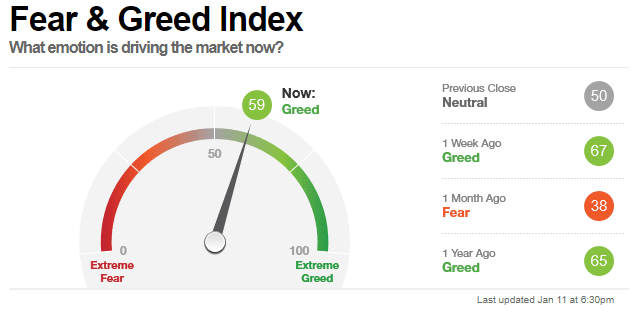
Take-Aways:
Disclosure: This information is prepared for general information only and should not be considered as individual investment advice nor as a solicitation to buy or offer to sell any securities. This material does not constitute any representation as to the suitability or appropriateness of any investment advisory program or security. Please visit our FULL DISCLOSURE page.
